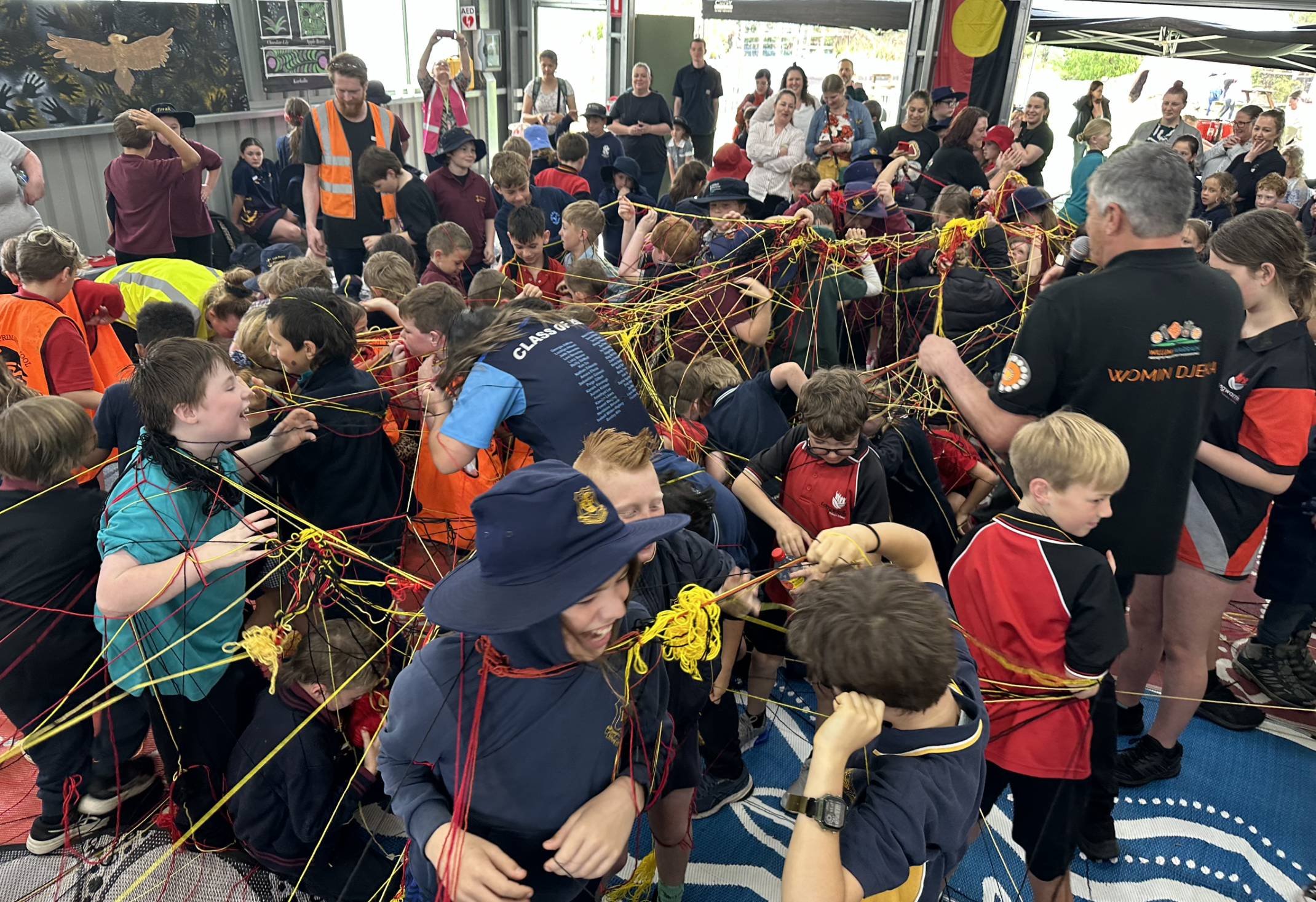21 Nov 2025
Peter Aldenhoven doesn’t want to sound melodramatic, but he confides that the Willum Warrain gathering place might not exist if it wasn’t for the Ross Trust.
Now one of the most successful gathering places in Victoria, catering to the growing Indigenous community on the Mornington Peninsula and surrounds, Willum Warrain Aboriginal Association found itself in crisis in its second year, a decade ago, when the Health Department pulled funding for its lone employee.
The venture was forced to close its doors for five months, before Ross Trust board members and executive staff visited, chatted about Willum Warrain’s plans, and immediately funded a part time coordinator, to renew the project’s momentum. That faith led to a return of state government funding and now the gathering place has a full staff, growing numbers and a bright future.
The Ross Trust also funded the creation of the gathering place’s precious pun puns (“wetlands” in Bunurong language) and more recently, has funded Willum Warrain’s youth activities, allowing hundreds of local Indigenous youths to connect with culture, stories and peers.
Peter, the chief executive officer, said that a three-year Ross Trust grant, finishing this year, had been crucial in building the confidence and sense of belonging among the Peninsula’s Indigenous youth. Funding the successful Koorie Kids Days, holiday programs, and tours for Indigenous students, the grant has had a major impact.
“The grant has helped us deliver culture to Aboriginal kids in primary schools across the Mornington Peninsula,” Peter said. “We’d been running Koorie youth summits targeting secondary kids for about four years, and we thought a natural extension of that would be to run a junior version.
“We’ve run Koorie Kids Day Out for the eight or 10 primary schools in the Western Port catchment area around Hastings and then recently, we did our annual Koorie Kids Day Out for the whole peninsula. I think we had 165 kids here from 21 schools, and 28 teachers.”
The Koorie Kids Day Out sees the Willum Warrain crew hold an acknowledgement of country and smoking ceremony, followed by a water blessing. “It’s a cultural welcoming, and then we do some icebreaker activities,” Peter said.
There are performers and workshops through the afternoon, all featuring culture, a chance to be creative and learn Indigenous history and stories.

“Kids get to connect with each other, and connect to Willum Warrain,” he said. “One of the problems Aboriginal kids can experience in educational settings is they might be the one Aboriginal kid in their year level, and schools, particularly smaller primary schools, don’t have capacity to do cultural events of any scale. Across seven year levels, you might have three or four Indigenous kids and they may or may not identify, or be identified. Sometimes those kids sit there in class, day after day, week after week, term after term, without any curricular speaking to their identity. When we run these days, they’re getting this opportunity to have a rich cultural experience and to see that there are lots of other Aboriginal kids living locally. The kids love it, and it clearly builds pride and cultural identity.”
Willum Warrain comprises 680 adult members and is representative of the broader Indigenous population residing in Western Port and the peninsula. Hastings is notable for having one of the largest suburban Indigenous communities in the state. While some Aboriginal families maintain strong cultural connections, Peter noted that others are unaware of their ancestral origins due to the impacts of the Stolen Generations and related historical trauma.
“We use the phrase ‘Broken Songlines’ to describe that disconnection,” he said. “Particularly in Victoria, the impacts of the Stolen Generations have been very significant so there are a lot of people in our Aboriginal community’s families who don’t know much culturally.”
The Koorie Kids Day Outs, along with the Deadly Youth after school and holiday programs, and cultural immersion tours of the gathering place, all help build a sense of belonging.
“We sit in the shed for a yarn, talk a bit about the history of the Bunurong people, a bit of language. Then we go outside and they tour around our plant trail and our pun puns. We end up at our ceremony ground, where we do a smoking and water blessing, paint the kids in ochre, they do a cultural dance, we do some storytelling and some fun activities,” he said.
The tours are on track for 12,000 children through for the 2025 school year, and Peter said it was common for teachers to marvel at the engagement and focus of Indigenous students who had not shown the same concentration in daily schooling.
“That’s the reason the gathering place primarily exists, to connect people into culture and hopefully support them on their cultural journey,” Peter said. “Particularly with young kids, it’s a big body of work to be done.”